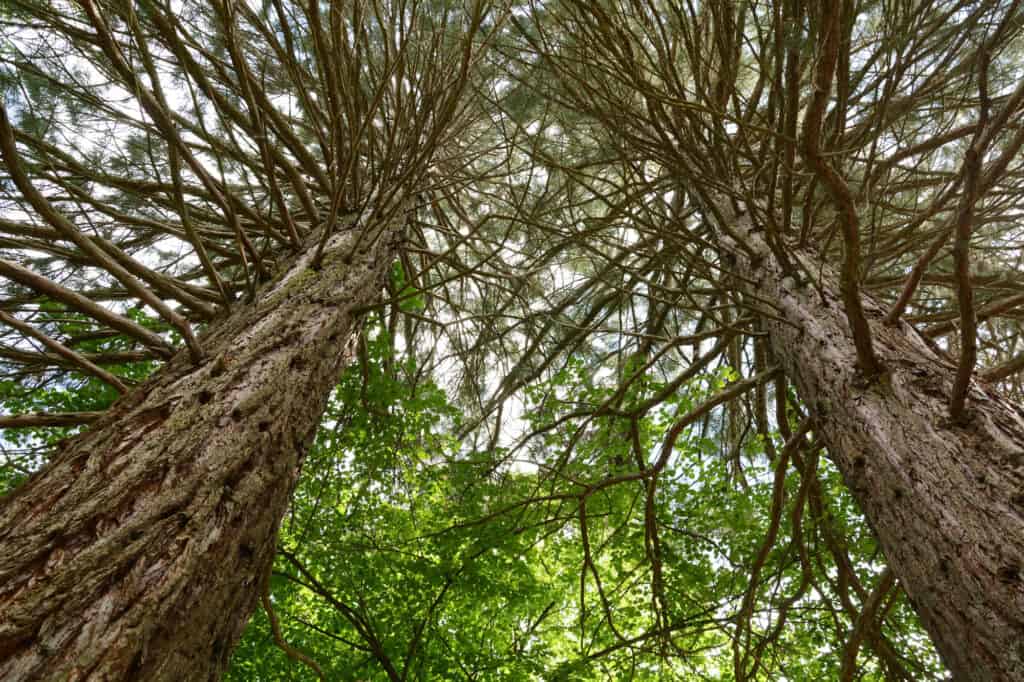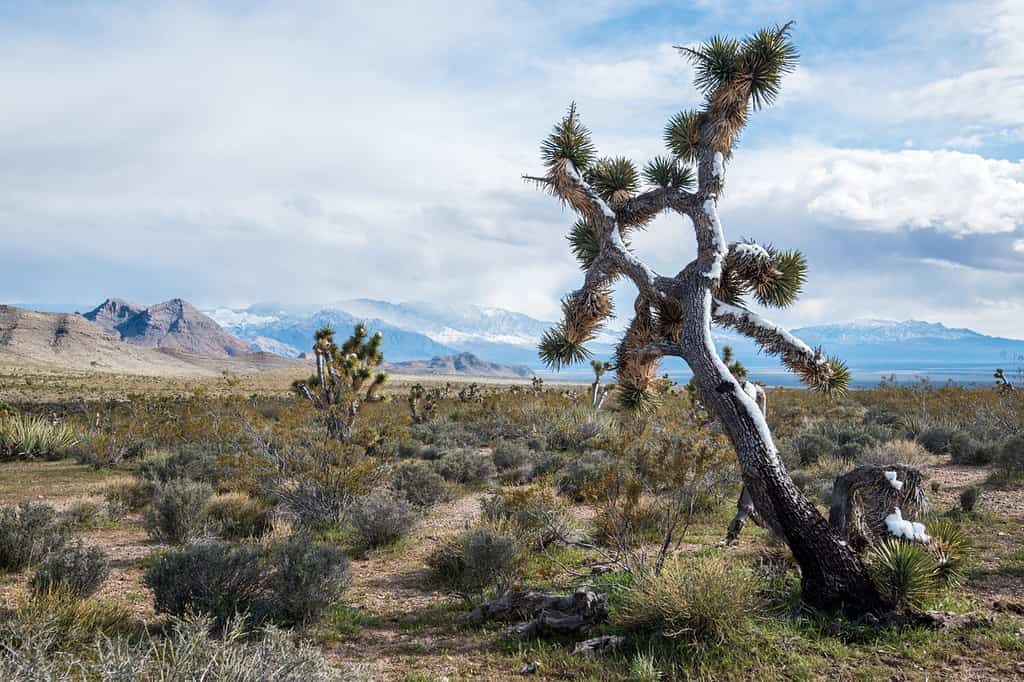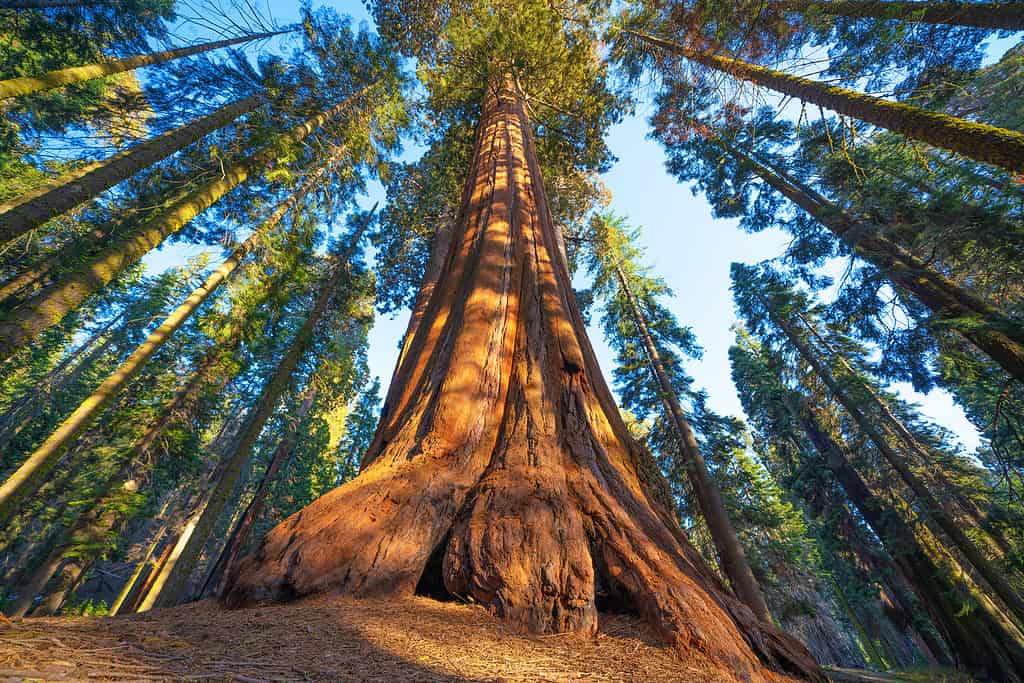California is not only known for its stunning landscapes and diverse ecosystems but also for its iconic native trees that have become symbols of the state’s natural beauty. In this article, we will explore the five most iconic trees native to California. Each with its own unique characteristics and historical significance. From towering giants that have stood tall for centuries to resilient survivors in harsh desert environments. These remarkable specimens are a testament to the resilience and majesty of nature. Join us on a journey through California’s forests as we delve into the stories behind these awe-inspiring trees. Let’s discover why they hold such a special place in the hearts of Californians and nature enthusiasts alike.
California Overview
California, located on the western coast of the United States, is a state known for its diverse landscapes, vibrant cities, and rich cultural heritage. Spanning over 163,000 square miles, California encompasses everything from stunning coastal cliffs to towering mountain ranges and expansive deserts.
Home to nearly 40 million people, California is the most populous state in the country. Its population represents a melting pot of cultures and ethnicities that contribute to its dynamic social fabric. The state’s largest city is Los Angeles. It is widely recognized as an entertainment capital with its thriving film industry and iconic landmarks such as Hollywood Boulevard and the Walk of Fame.
California also boasts several other major urban centers, including San Francisco, with its unmistakable Golden Gate Bridge. And, of course, Silicon Valley is renowned for being at the forefront of technological innovation. These bustling metropolises offer countless opportunities for work, recreation, and exploration. All while showcasing unique architectural marvels like San Francisco’s Victorian houses or downtown LA’s skyscrapers.
Beyond its urban areas lie vast expanses of natural beauty. From world-famous national parks like Yosemite and Joshua Tree to breathtaking coastline stretches along Highway 1 or Big Sur. Nature lovers are spoiled for choice in California! The state’s diverse ecosystems support an incredible array of wildlife species. Ranging from majestic redwood trees found in ancient forests to elusive desert dwellers like coyotes or roadrunners.
Most Iconic Trees Native to California
California is home to over two thousand native plant species. Here are a few of our favorites!
Coast Redwood

Thriving in damp environs, coast redwoods enjoy the Pacific Northwest most of all.
©Greens and Blues/Shutterstock.com
The coast redwood, known scientifically as Sequoia sempervirens, holds the esteemed position of being California’s state tree. Revered for its majestic stature and unique characteristics, this iconic tree has captivated nature enthusiasts and locals alike.
Growing to astonishing heights that can exceed 300-400 feet, the coast redwood stands as one of the tallest living organisms on Earth. Its massive trunk, often reaching diameters ranging from 8 to 20 feet (2.4 to 6 meters), commands attention and awe. The reddish-brown bark adorning its imposing figure is thick and fibrous. This provides excellent protection against fires – a threat commonly faced in California’s diverse ecosystems.
One remarkable feature of the coast redwood is its longevity. These ancient giants have endured through centuries, some even surpassing two millennia in age. Witnessing countless historical events unfold before their resilient branches, they serve as poignant reminders of the passage of time and the interconnectedness between nature and human civilization.
In addition to their grandeur and resilience, coast redwoods are renowned for their ecological significance within California’s landscape. Their presence contributes immensely to maintaining biodiversity by forming dense forest ecosystems. These ecosystems support numerous plant species while sheltering various animal habitats. Furthermore, these forests act as vital carbon sinks due to their ability to capture substantial amounts of atmospheric carbon dioxide through photosynthesis.
Venturing into the enchanting groves that stretch across northern California allows visitors to witness the awe-inspiring beauty of these ancient trees up close. The extensive groves provide a mesmerizing sight! With their massive trunks soaring toward the sky and their lush green foliage creating a tranquil canopy above.
The unique climate along California’s coast plays a crucial role in fostering the growth of these magnificent trees. The cool coastal fog provides essential moisture during dry summers while protecting the delicate leaves from excessive sunlight. This combination creates ideal conditions for coast redwoods to thrive.
Beyond their sheer size and age, coast redwoods also play an important ecological role within their ecosystem. Their vast root systems stabilize soil erosion along riverbanks and hillsides. They also provide providing habitats for numerous plant and animal species unique to this environment.
Joshua Tree

Joshua trees have deep roots that reach far below the surface for water.
©Layne V. Naylor/Shutterstock.com
Scientifically known as Yucca brevifolia, Joshua trees are among the most iconic and unique trees native to California. These extraordinary plants have become synonymous with the state’s arid deserts and rugged landscapes, particularly in the Mojave Desert region. With their striking appearance and remarkable adaptations to survive harsh conditions, Joshua trees have captivated both locals and visitors alike.
Named after the biblical figure Joshua by Mormon pioneers who saw its outstretched limbs resembling a prophet praying for victory, these trees can reach impressive heights of up to 40 feet (12 meters) or more. Their distinctive silhouette features thick branches extending upward like arms reaching toward the sky. Adorned with clusters of spiky green leaves that resemble yucca plants – their close relatives – Joshua trees possess an undeniable charm.
Joshua trees are remarkably resilient. They have evolved over centuries to thrive in the desert environment, where many other species struggle to survive. They possess an intricate root system that extends deep into the ground seeking water sources hidden beneath the dry soil. This adaptation allows them to withstand prolonged drought periods while ensuring they receive vital nutrients from underground reserves.
The life cycle of a Joshua tree is equally fascinating. It typically takes several years for these slow-growing giants to mature and begin flowering. Interestingly, only once they reach around 20-30 years old do they produce flowers atop tall stalks known as inflorescences. These blossoms showcase delicate creamy-white petals that contrast beautifully against their dark green foliage. A mesmerizing sight!
Bristlecone Pine

The Bristlecone pines of the Great Basin National Park are the oldest trees in the world.
©iStock.com/Riderolga
Great Basin bristlecone pine trees, an iconic symbol of California’s natural beauty, hold a fascinating place within the state’s diverse ecosystem. These ancient and resilient conifers are renowned for their ability to thrive in harsh environments. Particularly in the high-elevation regions of the Sierra Nevada and White Mountains.
One remarkable characteristic that sets bristlecone pines apart is their exceptional longevity. In fact, scientists recognize them as some of the oldest living organisms on Earth. With certain individuals exceeding an astonishing 5,000 years of age! This incredible endurance has allowed them to witness countless generations come and go throughout history.
The distinctive appearance of bristlecone pines also contributes to their allure. Their twisted branches create intricate patterns against the sky, while their gnarled trunks showcase a rugged beauty shaped by centuries of exposure to wind, extreme temperatures, and sparse soil conditions. The resinous needles which cover these majestic trees appear silver-gray from a distance but reveal stunning hues of green up close.
Moreover, bristlecone pines possess unique adaptations that enable them to survive in California’s challenging habitats. They have evolved incredibly dense wood, which acts as a defense mechanism against fungal decay and insect infestations prevalent at higher altitudes. Additionally, these slow-growing giants exhibit admirable drought tolerance by conserving water through reduced leaf surface area and minimizing transpiration rates.
Aside from being awe-inspiring natural wonders themselves, bristlecone pines play significant ecological roles within their native environment. By anchoring firmly in the rocky soil of California’s White Mountains, these ancient trees contribute to erosion control and slope stabilization. Their extensive root systems intertwine with the surrounding rocks, preventing soil erosion caused by heavy rainfall or wind gusts that often occur at such elevations.
Moreover, bristlecone pines serve as vital habitats for numerous species of wildlife. The unique characteristics of their gnarled bark and twisted branches provide shelter and nesting sites for birds like Clark’s nutcracker and various small mammals. These animals rely on the protection offered by the dense foliage during harsh weather conditions or while evading predators.
Giant Sequoia

Giant Sequoia and coast redwood are the two state trees of California.
©IM_photo/Shutterstock.com
The giant Sequoia, also known as Sequoiadendron giganteum, holds the esteemed title of being one of California’s most iconic native trees. Alongside the coast redwood, it proudly shares the designation of state tree for this diverse and vibrant region. As we delve into the captivating world of the giant Sequoia, let us embark on a journey to uncover its remarkable characteristics and significance.
Standing tall in select groves scattered across central and southern Sierra Nevada mountains, these awe-inspiring giants have captivated both locals and visitors alike for centuries. Renowned for their immense size and age, giant sequoias are truly nature’s living marvels. Towering above all other tree species on Earth when measured by the total volume of wood or mass, they can reach staggering heights exceeding 250-300 feet. This is equivalent to a 25-story building! Their trunk diameters surpass 40 feet, their bark can be 31 inches thick, and they can weigh up to 2.7 million pounds. That is one big tree!
One cannot help but feel humbled by their sheer magnitude. However, what makes these arboreal wonders even more extraordinary is their unparalleled longevity. With lifespans reaching thousands of years – some possibly surpassing three millennia – these ancient sentinels have witnessed countless generations come and go throughout human history.
Surviving through various natural disturbances like wildfires that sweep through their native habitats, giant sequoias owe much of their resilience to unique adaptations developed over time. Their thick cinnamon-colored bark acts as armor against intense heat while providing insulation against extreme cold temperatures during winter.
The giant Sequoia faces a daunting battle against extinction. With less than 75,000 individuals remaining worldwide, the giant Sequoia is an endangered species.
Remarkably adapted to withstand forest fires, these resilient giants owe their survival to their unique characteristics. One such adaptation lies in their bark, which possesses remarkable fire-resistant properties. When wildfires ravage their habitat, the thick and fibrous bark acts as a protective shield against the scorching flames.
Furthermore, another distinctive feature of these ancient beauties is their cones. Following a fire event’s fury subsiding and creating fertile conditions for rejuvenation, the heat triggers the opening of the cones’ scales—liberating thousands of seeds into nature’s embrace. This critical phase plays a vital role in ensuring future generations of giant sequoias can flourish amidst competition from surrounding vegetation.
However ambitious Mother Nature may be in her efforts to restore balance after a wildfire incident, she is not always successful. A complex dance between sunlight availability and soil quality poses challenges for successful reproduction among these towering sentinels. Giant sequoias demand copious amounts of direct sunlight and mineral-rich soils devoid of competing plants. This is an exacting requirement not always supported by nature. They are also thirsty trees, often thriving near streams. If those streams dry up due to climate change, the tree cannot survive. Add in the fact that squirrels, finches, chipmunks, and sparrows all eat sequoia seeds, and it is easy to see why they are an endangered species.
Torrey Pine

The Torrey pine tree, scientifically known as Pinus torreyana, is a truly remarkable and iconic species native to the beautiful state of California. Endemic to just two locations in Southern California – on Santa Rosa Island and in San Diego County – this rare coniferous tree holds great significance both ecologically and historically.
Named after the American botanist John Torrey, who first described it in the mid-19th century, the Torrey pine boasts several distinctive features that make it easily recognizable. This evergreen tree typically reaches heights ranging from 20 to 60 feet (6 to 18 meters) with a characteristic open crown and irregularly shaped branches. Its unique silhouette against California’s coastal landscapes has earned it a cherished place among locals and visitors alike.
Thriving within its limited range due to its ability to adapt to harsh environments, the Torrey pine exhibits impressive resilience. Often found growing along windswept bluffs or sandy slopes near the ocean, these trees have developed mechanisms for withstanding strong winds and salty atmospheres that would prove challenging for many other species.
Beyond its aesthetic appeal, this majestic native tree plays an essential role within its ecosystem. The Torrey pine provides critical habitat for various wildlife species indigenous to California’s coastal regions. Its large cones serve as valuable food sources for local birds such as crows and jays while also providing shelter for small mammals like squirrels.
However, despite its ecological importance, this tree is critically endangered. The California Native Plant Society estimates that there are only 3000-4,500 individuals alive on Earth.
The photo featured at the top of this post is © Simon Dannhauer/Shutterstock.com
Thank you for reading! Have some feedback for us? Contact the AZ Animals editorial team.






